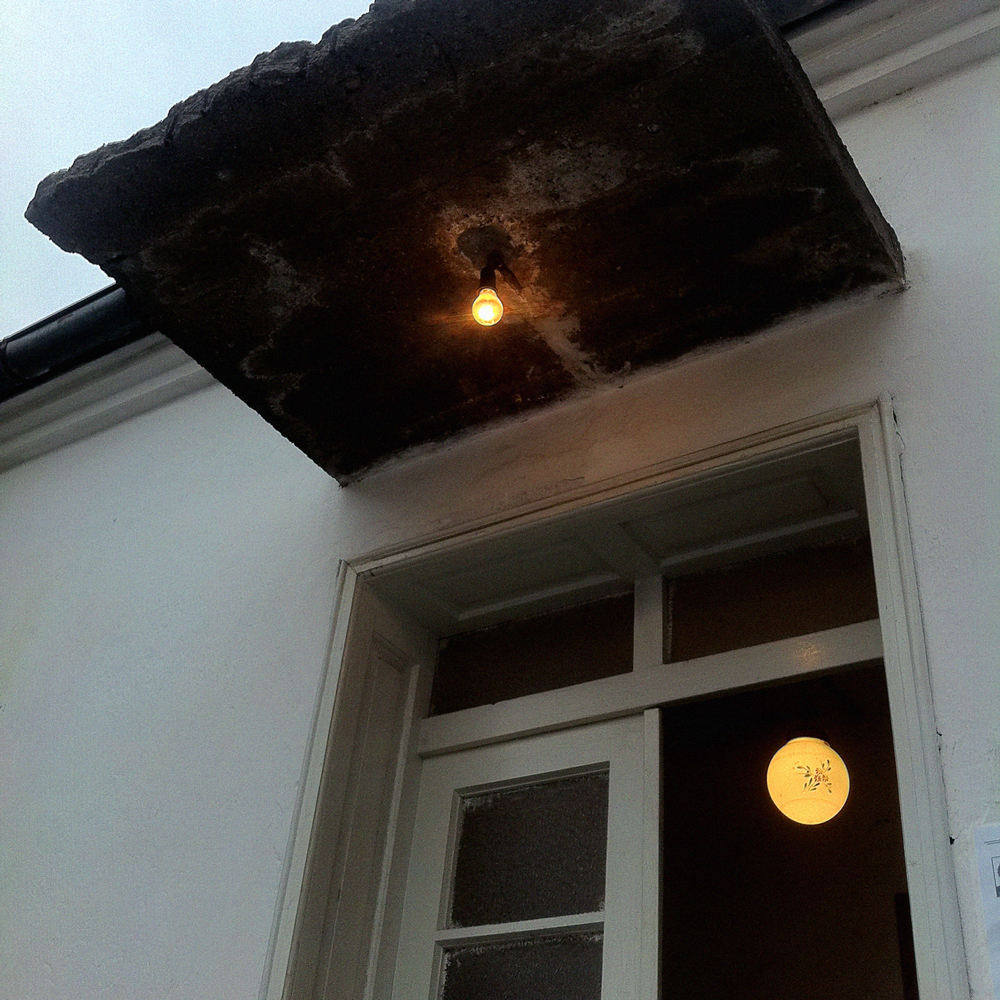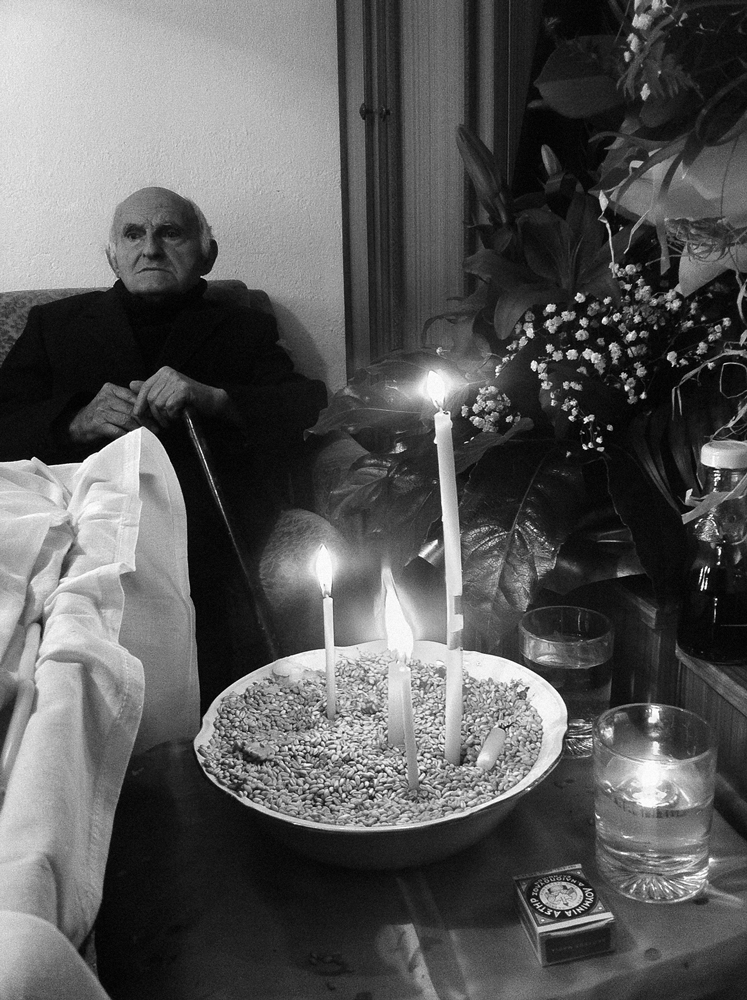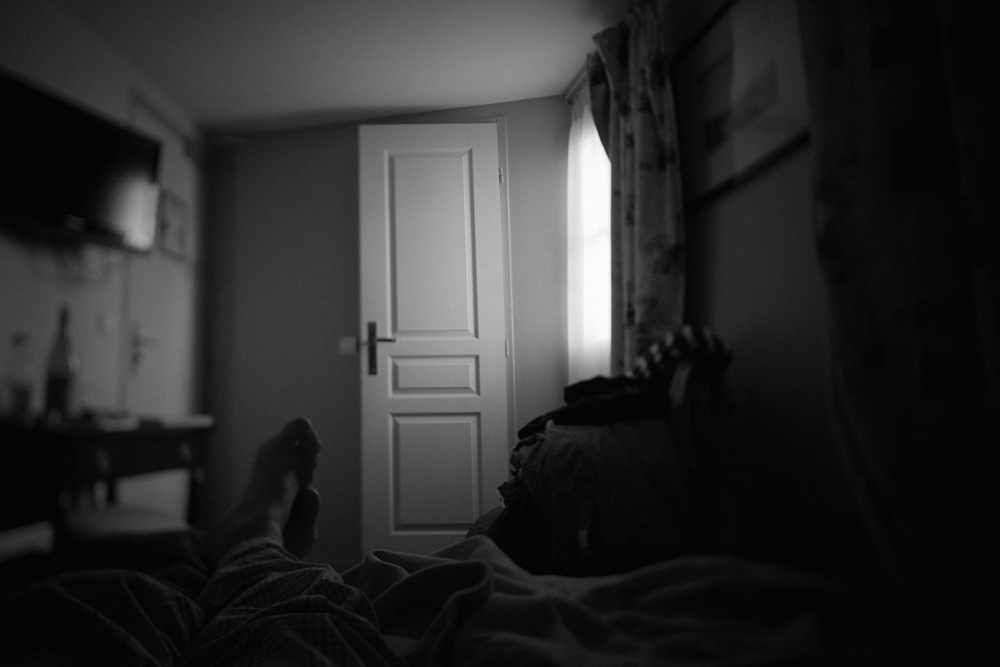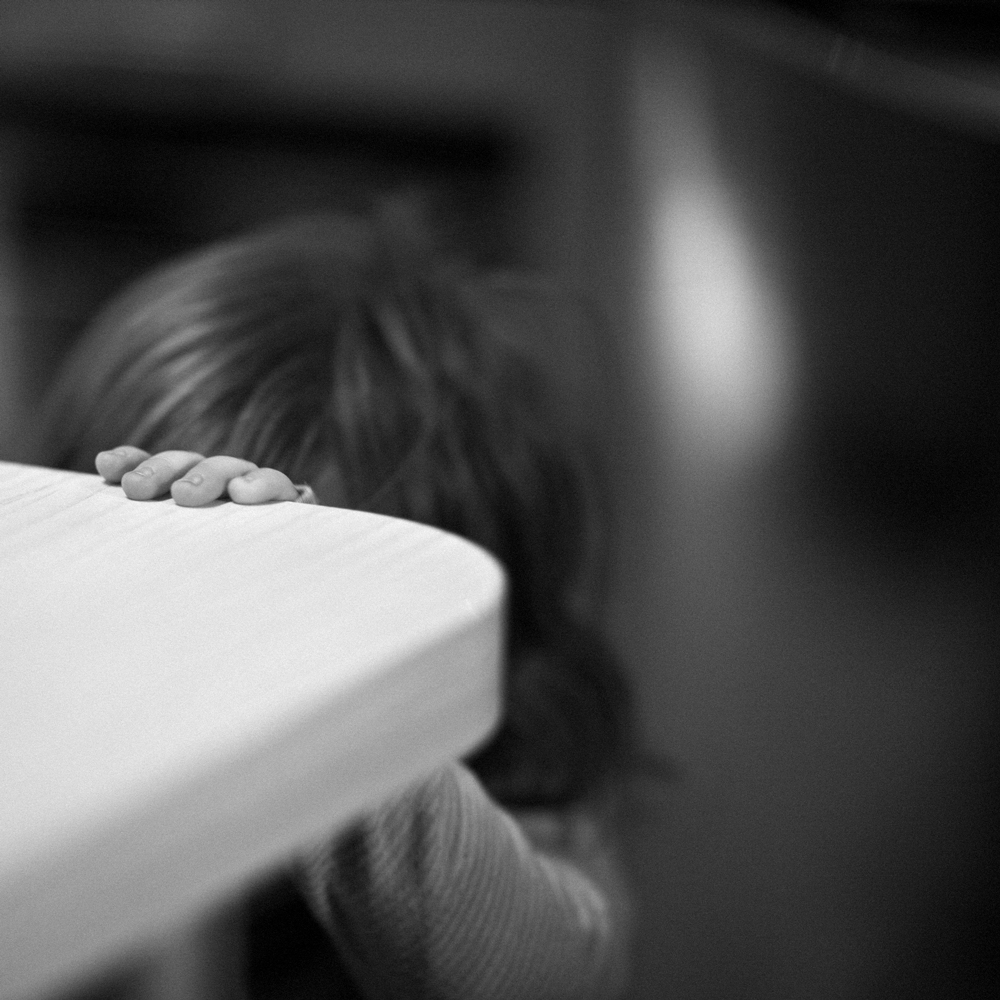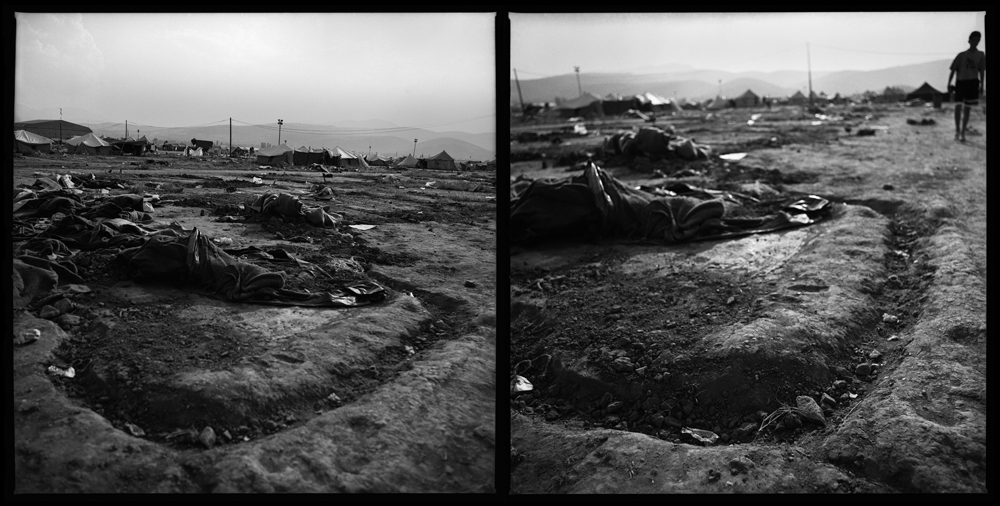What does home represent? Is it but a physical space where we feel safe or something much more? Is there more than one place that can have this meaning for us? Of course, the only place that offers the ultimate safety is our mother’s womb; it is our first home that has provided us with warmth that we will never feel again.
Contemplating my photographs that are related to home, I came across the photograph of my newborn son, made only minutes after he had come out of his comfortable shelter. Leaving one’s home can be found in the photographs entitled “The Red Line,” dating from 1999, when there were more than 300,000 Kosovo refugees residing in Macedonia. I was interested in the traces that people had left departing from their temporary homes and leaving to the unknown. I can still remember their faces, which could not conceal the feeling that they belonged somewhere else, far from the place to which they were heading, leaving the camp that had been their home for a couple of months. I wonder if the places of our short stays can be called home. I have found myself saying, “Let’s go home,” thinking of a hotel room or a rented apartment in another city.
I have often been interested in the border between the spaces depicted on a photograph; even a tiniest detail is sufficient to reveal the position of the photographer. This can be found in the photograph made from my apartment/home that shows a silhouette of a tree in the fog, with birds flying overhead. It is by the two reflections of the room light on the window glass that one understands that I am in a safe, warm place. This small detail brings in the warmth in this “cold” photograph and in a way indicates what is behind the camera, revealing the hunter.
Photography is a medium that turns temporariness into eternity. However, we almost always think solely in terms of the information that is found in the photographs, the image on the photograph, but not of the photograph as an object. It is an object that is gentle and fragile, an object that carries our memories that testify about our existence, those closest to us, our home. Quite often photographs are related to mortality. Death, on the other hand, is related to the place which is one’s last home—the eternal home. In a series of photographs entitled “Natura Morta,” I have tried to show these resting places in another context and play a trick with viewer’s first impressions.
After those close to us die, we are left only with the memories of them, and photographs are a tool that we reach for to make those memories more intense, if we manage. On the day my mother died, I felt I had started to lose the home in which I have not lived for more than twenty-three years. I felt the need to make photographs with details of the house, my father, and the objects around the casket that held my dead mother’s body. It was an attempt to preserve the home, although for me home has been located in another city. It was then that I realized that home is made by people, by those who are close to us being around us on a daily basis—they are its walls and windows.
Translated by Elizabeta Bakovska
